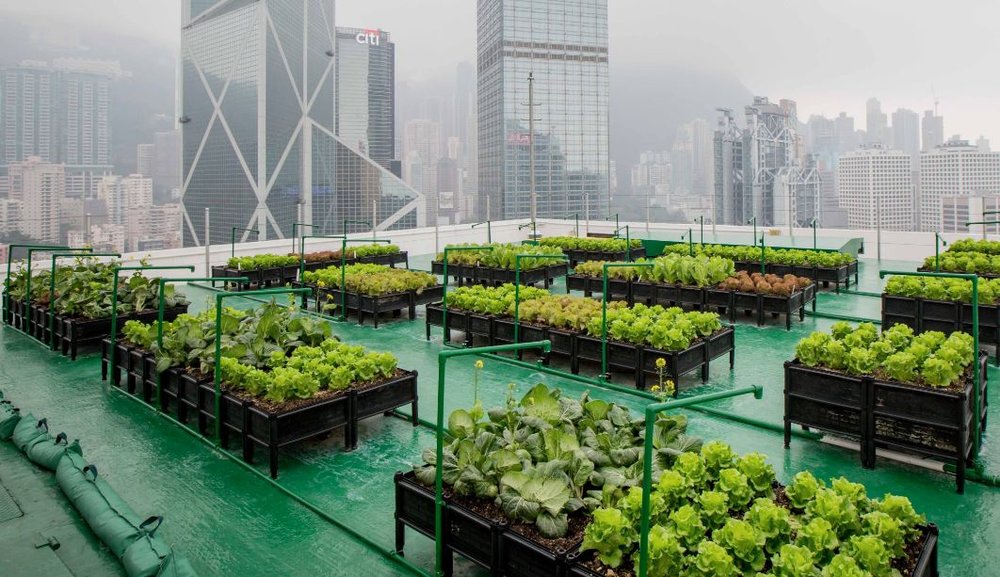Rumored Buzz on City Blooming
Rumored Buzz on City Blooming
Blog Article
The Best Strategy To Use For City Blooming
Table of ContentsCity Blooming Fundamentals ExplainedThe 30-Second Trick For City BloomingThe Ultimate Guide To City BloomingCity Blooming for BeginnersNot known Factual Statements About City Blooming
Fascinated in growing food for sale in the City of Chicago? Below is a listing of regularly asked questions relating to the regulations and regulations that farmers ought to take into consideration when intending a metropolitan farming task.
The zoning change does not modify any type of various other codes taking care of composting, structure authorizations, acquiring or leasing City had residential property, company licenses or ecological contamination. There are existing codes that manage these problems and they continue to be completely effect and might apply to your task. Area yards are typically had or taken care of by public entities, civic companies or community-based organizations and kept by volunteers.
Urban ranches grow food that is intended to be offered, either on a nonprofit or for-profit basis. As a result of their business function, city ranches require a service license. Yes. A community garden is enabled to sell excess generate that was expanded on site if the sales are accessory or subordinate to the garden's key purpose defined above.
The Best Guide To City Blooming
The amount of garden compost product can not go beyond 25 cubic backyards at any kind of given time according to the standards in 7-28-715 of the City's Municipal Code. Since the dirt at many brand-new garden sites needs modifying, compost, soil, wood chips, or other materials can be gotten to construct or improve the expanding area.

If a structure permit is called for after that the hoophouse will certainly be thought about an accessory building. You can discover even more concerning the structure authorization requirements by calling the Division of Buildings. The 25,000-square-foot dimension limit is intended to stop a solitary area garden from dominating a provided block or diminishing the block's existing household or industrial character.
The limitation does not use to gardens located in Public Open Room (POS) districts. Can there be even more than one area yard that is 25,000 square feet on a solitary block? Fencing is not required, nonetheless, yards that have large parking locations might be needed to mount fencing or other landscaping attributes.
Some Of City Blooming
B1 & B2 districts require that all business use activities be conducted indoors. R areas limit business activity. The policies mirror the objective and intent of the Zoning Code. Is fence needed for city farms? Yes. Fencings might be called for, in addition to landscape design and screening, for sure car park locations and exterior job or storage space locations depending on place and the particular task happening.
Yes. Urban ranches call for structure licenses and zoning authorizations prior to building and construction. Various other forms of city evaluation might be needed depending on details frameworks, tasks, dimension, landscape design, licensing, public health and stormwater monitoring problems. A number of these demands are recognized in the job design or allowing procedure, nevertheless, the applicant might be responsible to independently recognize details licenses or permits that may be needed.
The Division of Service Affairs and Consumer Defense can assist figure out the certain kind of company certificate that's required. Off road parking is required for many industrial jobs in Chicago. The called for number of parking spaces is based on the number of workers working on website and not the square video of the growing room.
Getting The City Blooming To Work

Yes. An urban ranch can market garden compost material created on website, nevertheless, the operation must adhere to the guidelines in 7-28-715 of the Chicago Municipal Code. Yes. Aquaponic systems are permitted inside your home on metropolitan farms in several zoning districts. A zoning review and building permit is called for in order to set up frameworks or systems and a service certificate is needed as defined above.
Approximately five hives or nests of honey bees may be maintained as an accessory usage. Nevertheless, beekeepers must sign up with the Illinois Department of Farming. To learn more concerning the suggested zoning amendment you may get in touch with the Department of Real Estate and Economic Advancement, Bureau of Preparation and Zoning at 312.744.8563.
Farming in cities and metropolitan locations A city farm in Chicago. Urban farming describes different methods of growing. https://us.enrollbusiness.com/BusinessProfile/6739712/City%20Blooming#google_vignette, processing, and dispersing food in metropolitan locations. The term also uses to the location tasks of animal husbandry, tank farming, beekeeping, and cultivation in a metropolitan context. Urban agriculture is differentiated from peri-urban farming, which occurs in backwoods beside suburbs.
City Blooming Things To Know Before You Buy
, that seek to form social networks established on a shared principles of nature and neighborhood holism. These networks can establish by method of official institutional assistance, coming to be incorporated into local town planning as a "transition community" activity for sustainable metropolitan development.
The more direct accessibility to fresh vegetable, fruit, and meat products that may be become aware through urban agriculture can improve food safety and security and food safety while decreasing food miles, bring about reduced greenhouse gas exhausts, thereby adding to climate change mitigation. Several of the very first proof of urban farming comes from Mesopotamia.
Report this page